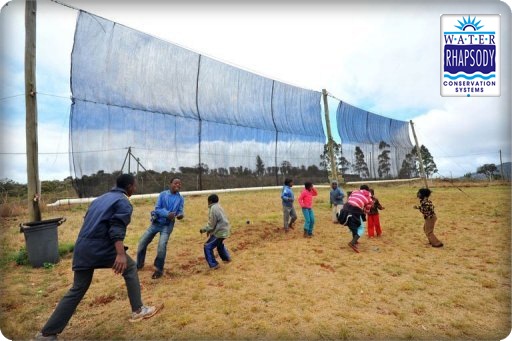Difference between revisions of "Water Portal / Rainwater Harvesting / Fog and dew collection"
From Akvopedia
(Created page with "Fog harvesting gives water to S. African village. Photo: waterconservation.co.za Fog collection is an innovative, environmen...") |
|||
| Line 1: | Line 1: | ||
| − | [[File:Fog-harvesting.jpg|200px|thumbnail|right|Fog harvesting gives water to S. African village. Photo: waterconservation.co.za]] | + | [[File:Fog-harvesting.jpg|200px|thumbnail|right|Fog harvesting gives water to S. African village. Photo: [http://www.waterconservation.co.za waterconservation.co.za]]] |
Fog collection is an innovative, environmentally appropriate, socially beneficial and economically viable use of fog, rain and dew as sustainable water resources for people in arid regions of developing countries. Fog is composed of enormous numbers of tiny water droplets. The wind blown droplets can be collected by a plastic mesh. Typical fog harvesting in a well selected desert environment would be 5 liters of water per square meter of mesh per day. | Fog collection is an innovative, environmentally appropriate, socially beneficial and economically viable use of fog, rain and dew as sustainable water resources for people in arid regions of developing countries. Fog is composed of enormous numbers of tiny water droplets. The wind blown droplets can be collected by a plastic mesh. Typical fog harvesting in a well selected desert environment would be 5 liters of water per square meter of mesh per day. | ||
Revision as of 06:39, 31 July 2013

Fog harvesting gives water to S. African village. Photo: waterconservation.co.za
Fog collection is an innovative, environmentally appropriate, socially beneficial and economically viable use of fog, rain and dew as sustainable water resources for people in arid regions of developing countries. Fog is composed of enormous numbers of tiny water droplets. The wind blown droplets can be collected by a plastic mesh. Typical fog harvesting in a well selected desert environment would be 5 liters of water per square meter of mesh per day.
